Vue 7 Infinite
-
A NEW question:
Is it possible to make a texture/bump map for use in Vue from one of the Sketchup textures, brick for example?
...so that one could simply color in Sketchup, and apply the appropriate bump map in Vue without making a complete change of materials once the object file is in Vue?
-
@hombre said:
Is it possible to make a texture/bump map for use in Vue from one of the Sketchup textures, brick for example?
And to go along this line - save these tweaked materials in Vue (gradually build up a material library there)?
-
@gaieus said:
@hombre said:
Is it possible to make a texture/bump map for use in Vue from one of the Sketchup textures, brick for example?
And to go along this line - save these tweaked materials in Vue (gradually build up a material library there)?
Done figgered this one out....
When you export a SKP file as an OBJ file, it also makes a .jpg image of each texture. You can then take the jpg texture into Photoshop and make a high contrast bump map out of it that fits like a glove.
My biggest issue is with exporting/importing. I've tried at least 6 methods by others I've read about, but all have had their own serious drawbacks with issues of scaling, leaving out information, or creating a zillion different meshes that are impossible to sift through in order to alter their materials...within a lifetime that is. A Chipp Walters method looked really good with a rubyscript plug in exporter, but it consistently lost information in the process. Maybe all this stuff works better on a PC and I'm a MAC guy...but I saw Solo complaining about the million mesh issue somewhere here too. The scaling issue is also compounded by the fact that there is no internal measuring tool within VUE to actually scale things by: it's this eyeballing game, and when all of the various types of models are imported into Vue, each one comes in differently. It's like this constant game of resizing HO trains onto a Lionel track, or vice versa. I'm kinda surprised that such a simple concept has not been taken into consideration when the program is really stellar. BTW: what size are those grid squares supposed to be in Vue anyway? That MIGHT help if I knew what those are, but a search of the manual and google turned up zilch.
-
THey are in 10m grids by default I think. Go to File > Preference > Units and then change your settings there. I took a while to play around with settings and finally once I got it right, many things in VUE worked better.
Chris
-
Hi Everybody,
I recently started to take a look at Vue. I think the workflow from SU to Vue is realy easy. First use plugin called View to Vue, then export model as OBJ. In Vue import model -> edit object-> weld and split ( then you get a list of materials by name. Then load the exported camera view as a Phyton script.
Al materials you make in Vue can be saved to make your own collection. I you're interested in Vue, check outy the tutorials at Geek at Play.
-
Thanks everyone for your interest and help!
@pugz1983 said:
..... I think the workflow from SU to Vue is realy easy. First use plugin called View to Vue, then export model as OBJ. In Vue import model -> edit object-> weld and split ( then you get a list of materials by name.
Where is the plug in: 'View to Vue?, I have searched and not found it.
@chris fullmer said:
THey are in 10m grids by default I think. Go to File > Preference > Units and then change your settings there. I took a while to play around with settings and finally once I got it right, many things in VUE worked better.
I am not sure of what they are. According to my default preferences, they are supposed to be 1 meter, but I am on a MAC..whatever. Changing those defaults for the grid doesn't really do anything to the grid for me: everything I import in, still stays the same scale relative to the grid. I'm using Vue 7.5 infinite.
..but forget the scale for a moment and take a look at these examples:
I downloaded a random car from the 3D warehouse, and exported it using the same scale settings in Sketchup, and imported using the same scale settings in Vue.
In the first pic, the native Sketchup exporters ( Collada and Obj ) worked flawlessly, however each exported in a different scale. The issue with both of these Sketchup exporters is that they break down the model into 'meshes' instead of 'materials', which means that on this particular model, I end up with 114 meshes for the Obj export and 135 meshes for the Collada. From theer one has to go searching through to find whatever 'part' one needs to alter the attributes of, so then if one simply wants to alter the reflectivity of the body color, one ends up having to sift through all of these 'meshes' to find the appropriate ones and alter a dozen or more different 'meshes' to make that change. Dittos for any other material. So that method while being an accurate translation from the Sketchup model, becomes incredibly burdensome to deal with. I have found however, that in native Sketchup models that I produce, if I explode all components before exporting, I end up with a 'color/material' set, instead of 'meshes'. I wonder if the models ( like cars etc. ) at the 3D warehouse, were produced in other programs and exported into Sketchup and this is what is creating the problem.
In the second pic, I have used the objexporter.rb plug in from Chipp Walters site, which has consistently produced random and bizarre occurrences, though it splits the model into materials instead of 'meshes' which ends up being great for finding things, but the aberrations are unacceptable. I have watched his video a dozen times and it works for him..but then again, maybe it's the whole PC/MAC issue.....I don't know.
If anyone has a clue as to dealing with these issues......please help: I need something with the accuracy of the native Sketchup exporters, yet the simplicity of the ruby exporter.
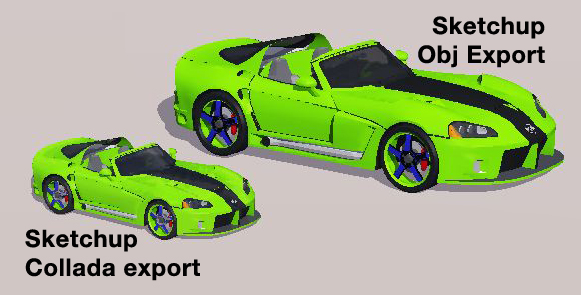
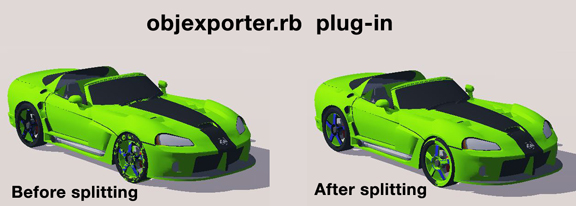
-
Can you give link to the model in warehouse. I will give it a go on my side.
-
Nevermind I typed 'car' and it was the third in line.
The model was a little screwed up, I used the 'cleanup' ruby to fix it.

I then used straight up .3ds export from SU and opened it up with vue.
I welded in Vue and split by materials.
Then a quick render with basic mats.

-
Look like it worked "ok" then

-
Thanks Solo: YOU DA MAN!
That is AWESOME!
I thought that perhaps the model was suspect in that case, but I've had problems with the objexporter.rb with a VERY simplistic model that I made for playing with textures of a brick wall, and others as well.
How did you know WHERE it was messed up, when it looked clean in Sketchup?
~ and:
Where do I find the 'cleanup' ruby that you're talking about?
Thanks for your help and answering what are probably stupid questions, but someone else besides me will read these too...and I won't feel like such a lonely klutz.
-
Here is the cleanup ruby.
http://forums.sketchucation.com/viewtopic.php?f=323&t=22920
I use this ruby for every model I import (unless I made it and it's already clean)
-
Thanks again...you're a great asset to this forum.
-
Question 3,010.
...related to the last issue that you solved poste haste, I have a question that is similar but more detailed.
Here is a model I got from the 3D warehouse.
It is a very nice model. I renamed few colors for my own simplicity, used the cleaner you recommended and brought it into Vue.
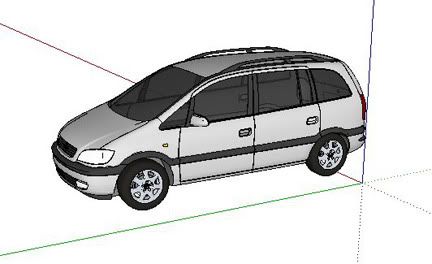
Once I got it into Vue, I welded and split it and found that I had a problem with the tires becoming one material with the wheels, though each were separate components in the model, with separate colors and names.
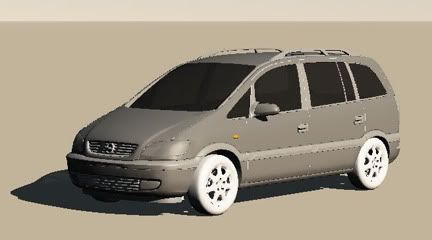
I went back to the Sketchup model, and opened up the components to check them and found that they were OK. Then I decided to see if anything was inside out. SURPRISE! Almost the whole model was inside out. I thought that I'd just forget about it and dump it, but it's a nicely done minivan model, and I thought I'd bite and go back and laboriously reverse each material, recolor and rename. Well, I started on one of the evil wheels, reversed it, but the 'good side' wouldn't take color. HUH?
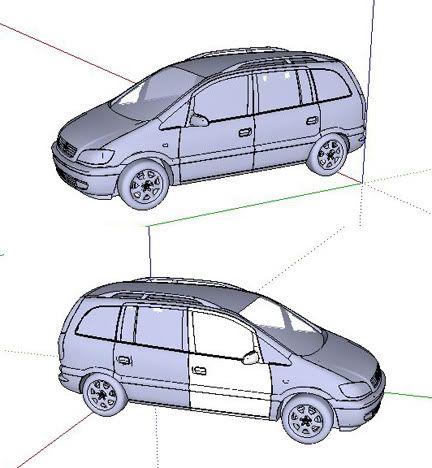
So I dunno. What would you do to make this model right?
Will the cleanup ruby work magic on this in a way I don't know, or is it a lost cause?
-
There is a reverse face ruby available someplace, I never use it as I normally model with faces the right way round or I use Deep exploration (an expensive 3rd party app) to clean and reverse normals of imported models.
-
Hi everybody,
I have a question about animation rendering in Vue. I've made a small animation of an airplane flying. I wanted to render it so I put in the settings at Animation render options. I'm using the external render option, saving as an Avi and selected to render the whole animation. Now the problem. When I hit the render button it only renders 1 frame out of 339 ( i think ). Is this a bug or am I doing something wrong? I'm using Vue 8 on a Core to Quad with 4 gb.
Greetz from Holland.
-
I am seriously considering jumping on the Vue bandwagon, especially since I have a job where I think it would prove useful.
Can one of you Vue users tell me if modelling a rough version of the following small quarry face and vegetation would be pretty much do-able in vue.
I am currently designing and modelling a building to sit on this site and to do it justice, I would love to produce a quarry face with lots of vegetation behind it.
I don't need to copy it exactly, just show something in a similar vain behind it.So if I model my building and add mats in SU, could I create this site in vue and import the su model to render?
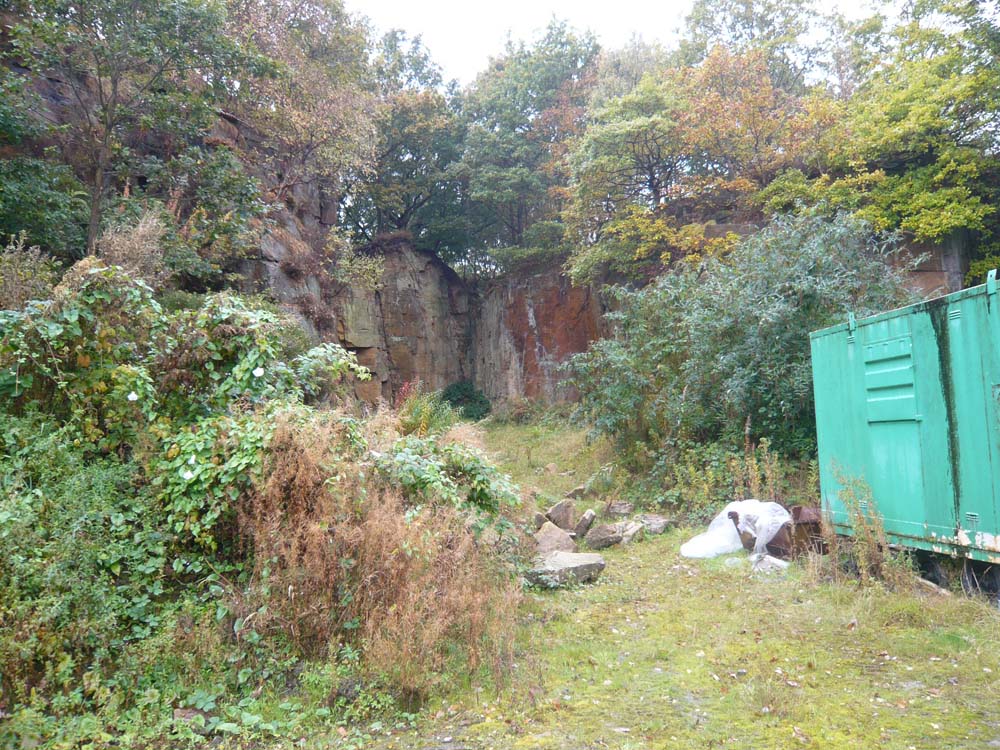
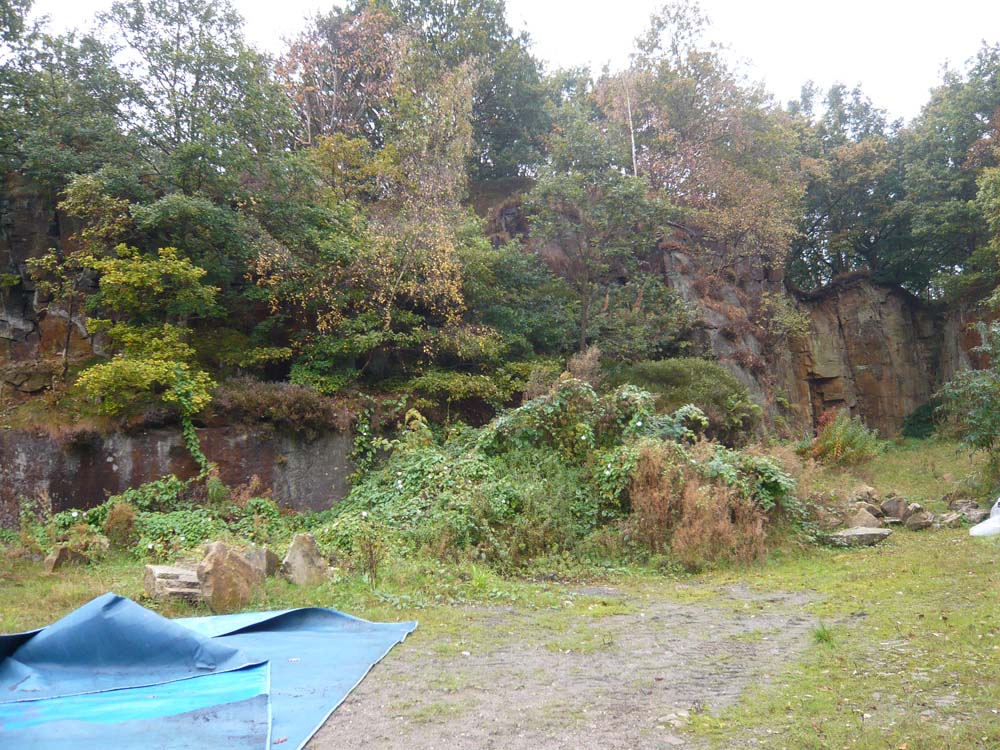
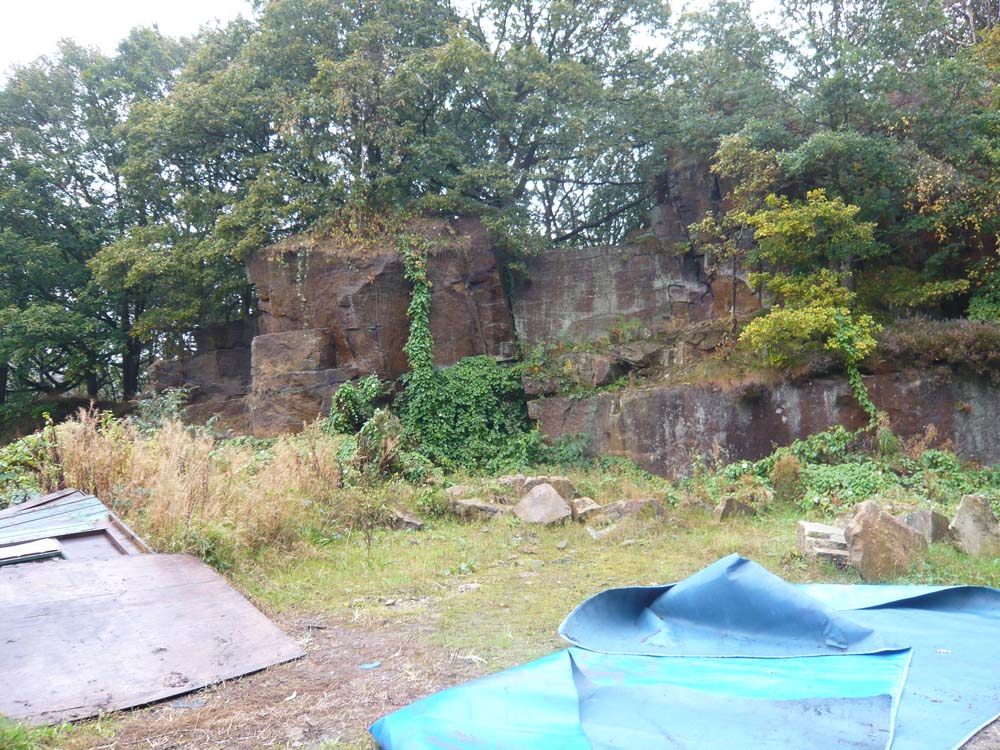
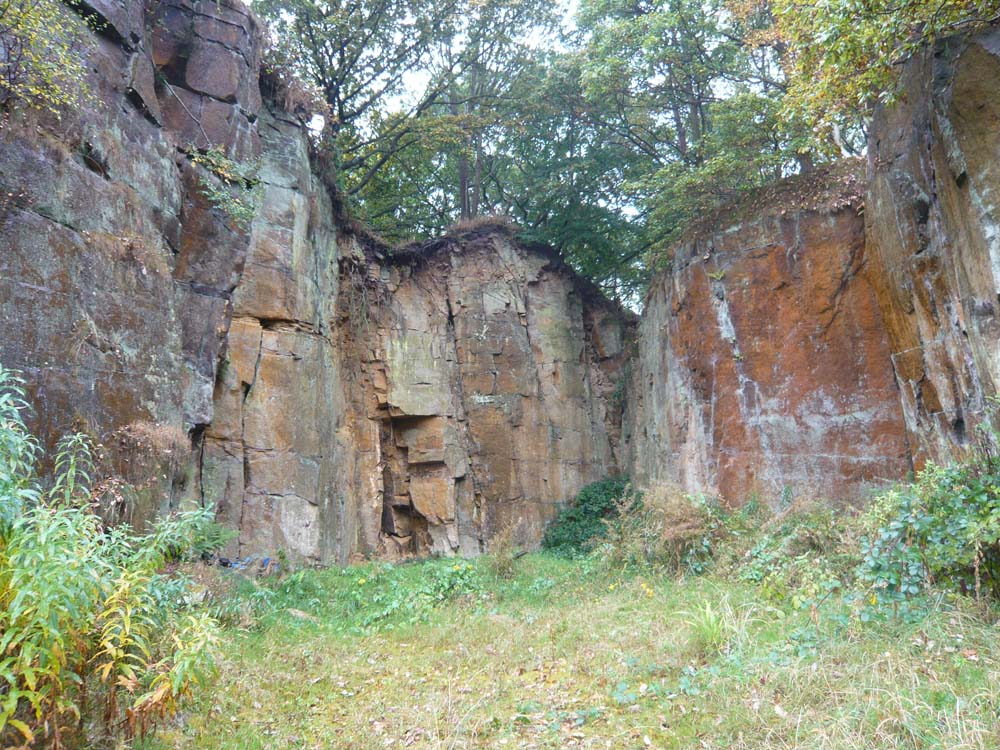
-
...I'm not the expert here but the answer is YES....however with a specific geometric rock face like that, I would be inclined to model it rough in SKP and use the photography as alpha/bump maps, in short, creating the specific terrain in SKP and using VUE to populate it with green stuff. Vue isn't good for modeling...but I'd love to hear how someone would approach it from that direction.
Advertisement







